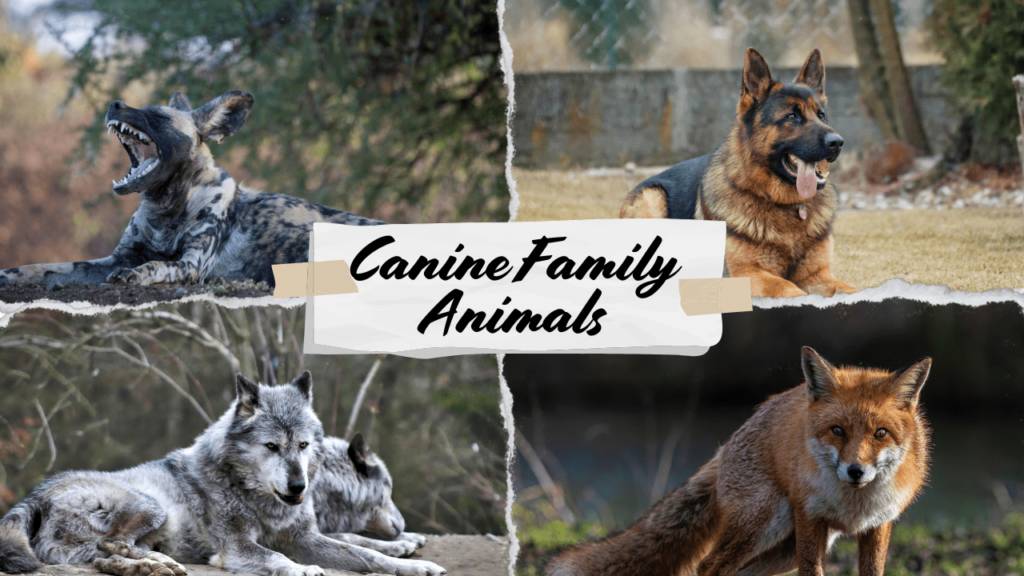Introduction
Penguins are captivating birds that have adapted to some of the most extreme environments on Earth. From the icy reaches of Antarctica to temperate coastal regions, each type of penguin exhibits unique traits and adaptations that make them stand out in the avian world. In this guide, we explore the different penguin species, their habitats, and distinctive characteristics. Whether you’re a penguin enthusiast or just curious about these fascinating creatures, this article will provide valuable insights into the different types of penguins.
Types of Penguins
Understanding the various penguin types can reveal fascinating details about their behavior and survival strategies. One of the most fascinating aspects of penguins is that they are among the few animals that mate for life.
1. Emperor Penguin (Aptenodytes forsteri)
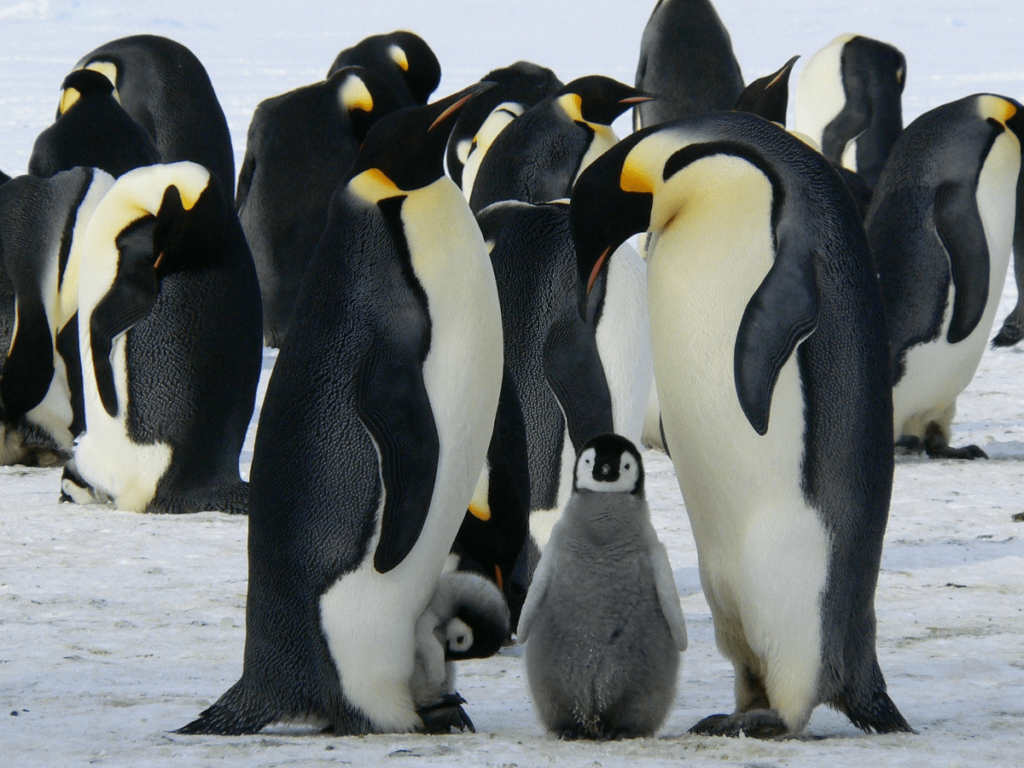
Description: The Emperor Penguin is the largest penguin species, with adults reaching up to 1.2 meters (4 feet) in height. They are known for their remarkable endurance in the harsh Antarctic climate.
Habitat: Exclusively found in Antarctica, Emperor Penguins breed on sea ice and are well-adapted to the extreme cold.
Key Features: Their striking orange and yellow patches on the neck and chest make them easily recognizable. They have a distinctive, deep call used for communication.
Lifespan: Shortest – 15 years, Average – 20 years, Longest – 20 years
2. King Penguin (Aptenodytes patagonicus)
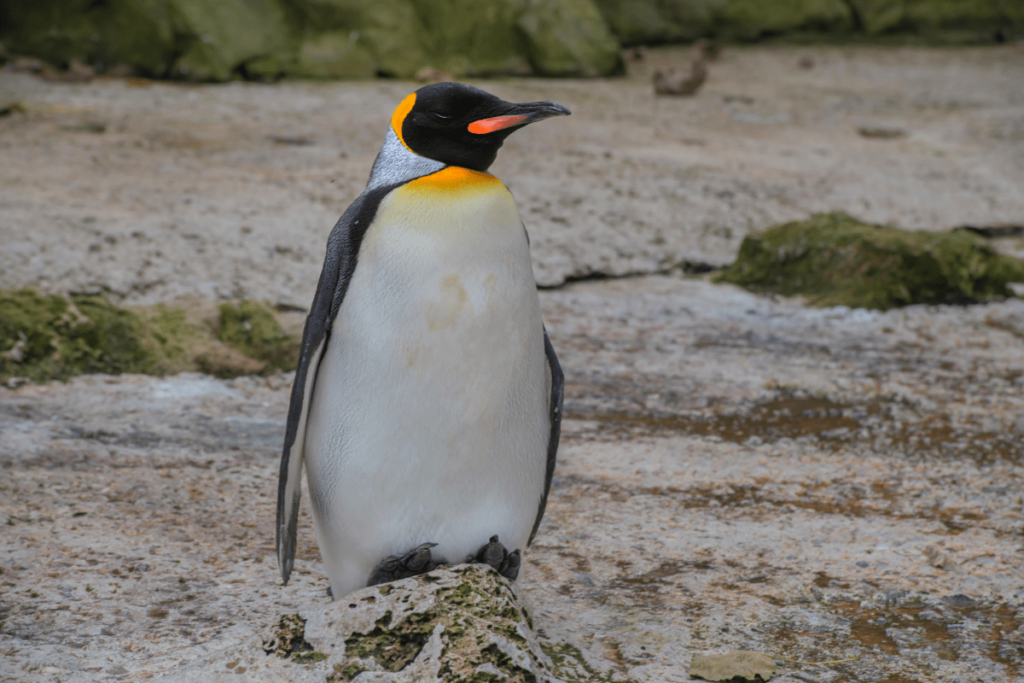
Description: The King Penguin is the second-largest species of penguin, standing slightly smaller than the Emperor Penguin. They are known for their vibrant plumage and elegant appearance.
Habitat: They inhabit sub-Antarctic islands, including South Georgia and the Falkland Islands, where they thrive in milder climates compared to their Antarctic cousins.
Key Features: King Penguins have a distinctive orange and yellow patch on their chest and neck, and their calls are less deep but distinctive to their colonies.
Lifespan: Shortest – 15 years, Average – 20 years, Longest – 25 years
3. Adélie Penguin (Pygoscelis adeliae)
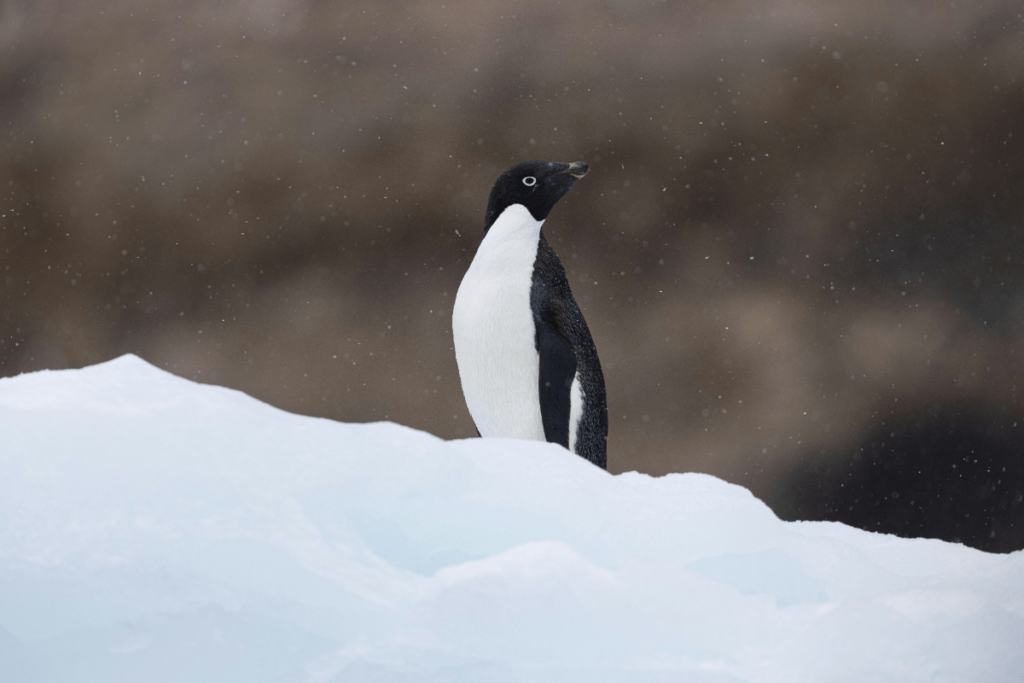
Description: Adélie Penguins are medium-sized penguins with a classic tuxedo appearance. They are known for their playful behavior and strong swimming abilities.
- Habitat: Found along the Antarctic coast, Adélie Penguins are well-adapted to icy conditions and are often seen in large, noisy colonies.
- Key Features: They are characterized by their white ring around the eye and all-black head. Their breeding behavior includes elaborate courtship displays.
Lifespan: Shortest – 10 years, Average – 15 years, Longest – 20 years
4. Chinstrap Penguin (Pygoscelis antarcticus)
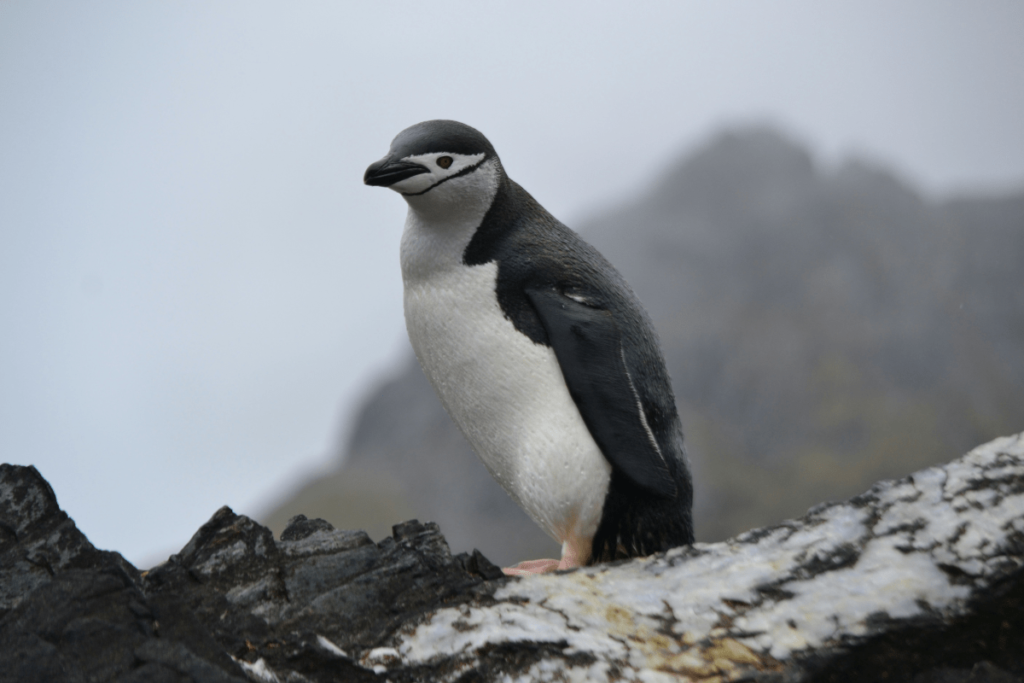
Description: The Chinstrap Penguin is known for the thin black band under its chin, resembling a chinstrap. They are slightly smaller than Adélie Penguins but have similar habits.
Habitat: They are found in the Antarctic Peninsula and various sub-Antarctic islands. Chinstrap Penguins prefer rocky environments for nesting.
Key Features: Their most distinctive feature is the narrow black band that runs across their chin and throat. They are highly social and often seen in large groups.
Lifespan: Shortest – 10 years, Average – 15 years, Longest – 20 years
5. Gentoo Penguin (Pygoscelis papua)
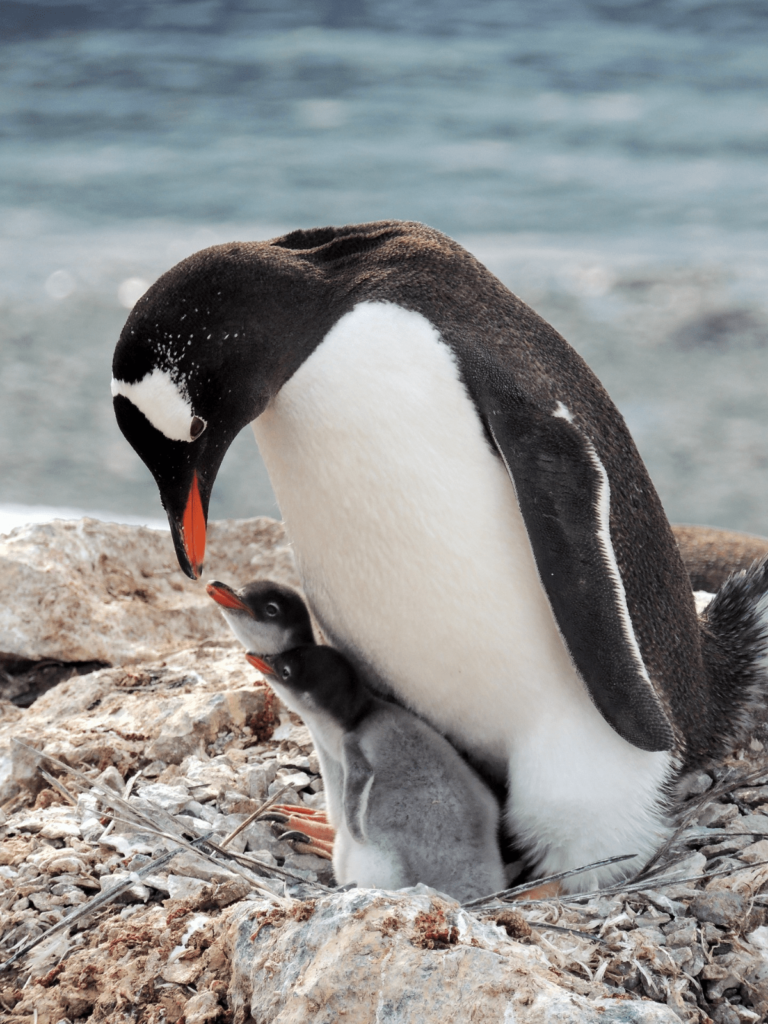
Description: Gentoo Penguins are known for their bright orange beaks and the white patch above their eyes. They are one of the fastest swimming penguins, reaching speeds of up to 36 km/h (22 mph).
Habitat: They inhabit sub-Antarctic regions, including the Falkland Islands and South Georgia. They prefer relatively mild climates compared to other penguins.
Key Features: The Gentoo Penguin has a distinctive white belly and a longer tail compared to other penguin species. Their vocalizations are varied and include a range of trills and whistles.
Lifespan: Shortest – 15 years, Average – 20 years, Longest – 22 years
6. Macaroni Penguin (Eudyptes chrysolophus)

Description: The Macaroni Penguin is easily recognizable by its striking yellow crest feathers. They are relatively small compared to Emperor and King Penguins.
Habitat: They live on sub-Antarctic islands, including South Georgia and the Crozet Islands. They are known for their large, noisy colonies.
Key Features: Their bright yellow crest feathers and orange beak make them stand out. They are also known for their energetic courtship displays.
Lifespan: Shortest – 10 years, Average – 15 years, Longest – 20 years
7. Little Blue Penguin (Eudyptula minor)
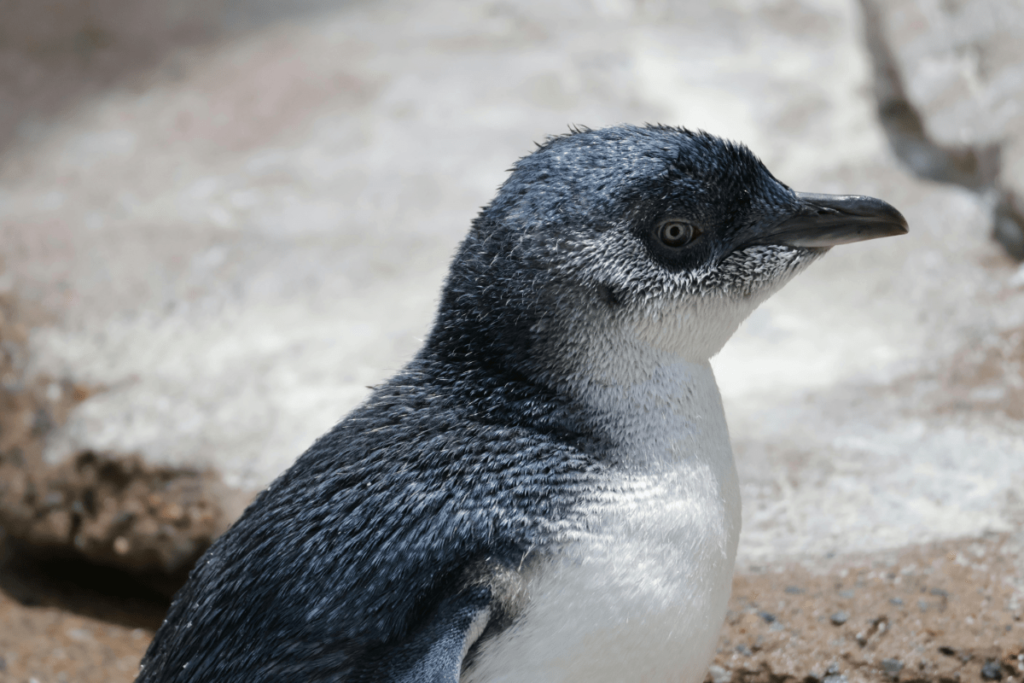
Description: The Little Blue Penguin, also known as the Fairy Penguin, is the smallest penguin species, with adults standing about 33 cm (13 inches) tall.
Habitat: Found in the coastal regions of Australia and New Zealand, Little Blue Penguins are adapted to warmer climates compared to their Antarctic relatives.
Key Features: Their small size and blue-gray plumage make them easily distinguishable. They are known for their nocturnal behavior and social nature.
Lifespan: Shortest – 6 years, Average – 10 years, Longest – 12 years
8. Royal Penguin (Eudyptes schlegeli)
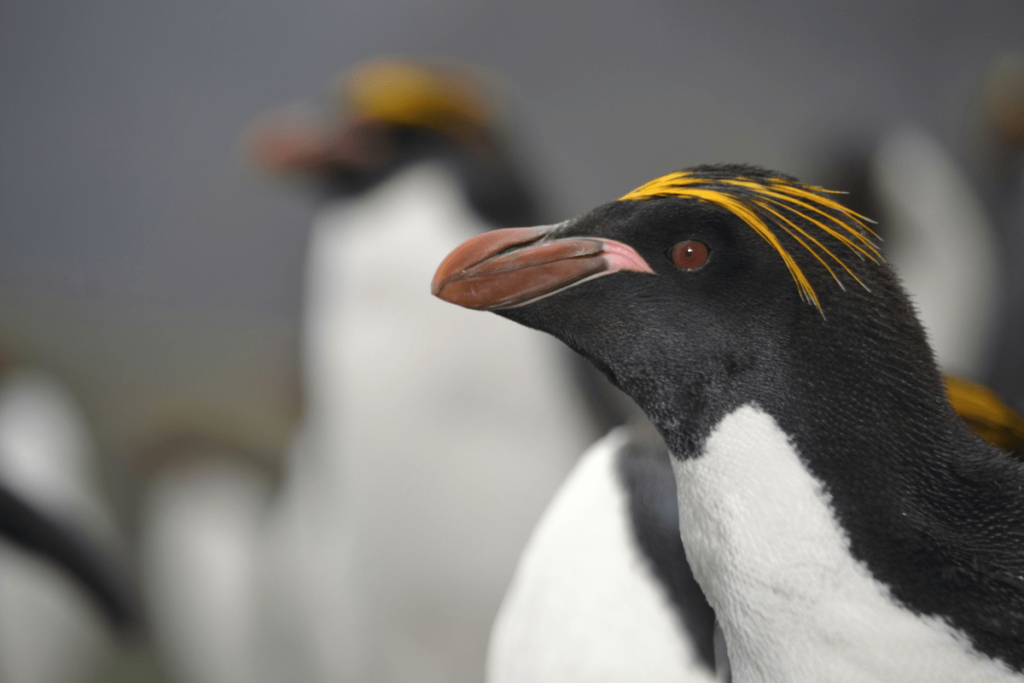
Description: The Royal Penguin is closely related to the Macaroni Penguin but has a more pronounced white face and a brighter yellow crest. They are medium-sized and have a distinctive appearance.
Habitat: They breed on Macquarie Island in the southern Indian Ocean and are found in large colonies on the island.
Key Features: Their bright yellow crest feathers and white face make them easily identifiable. They are known for their elaborate courtship rituals.
Lifespan: Shortest – 10 years, Average – 15 years, Longest – 20 years
9. Fiordland Penguin (Eudyptes pachyrhynchus)

Description: The Fiordland Penguin is known for its distinctive thick yellow crests and its relatively small size compared to other crested penguins.
Habitat: They are found in the Fiordland region of New Zealand and prefer dense temperate rainforests and coastal areas.
Key Features: Their thick yellow crests and relatively dark plumage set them apart. They are known for their secretive nature and elusive behavior.
Lifespan: Shortest – 10 years, Average – 15 years, Longest – 20 years
10. Snares Penguin (Eudyptes robustus)
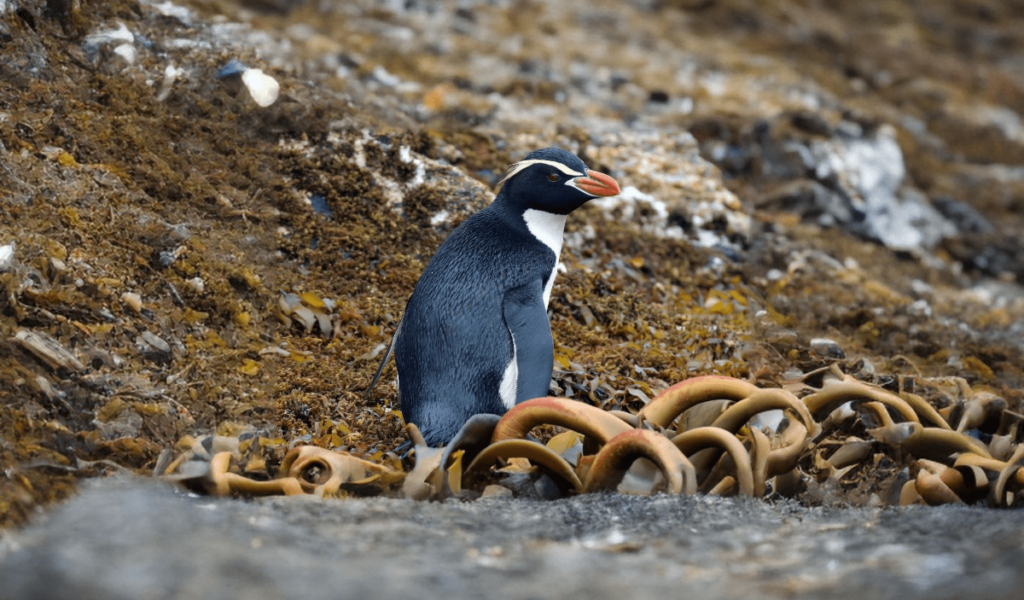
Description: The Snares Penguin is characterized by its short, stout yellow crest feathers and its robust build. They are smaller and less well-known than some other crested penguins.
Habitat: They inhabit the Snares Islands, south of New Zealand, where they breed in dense colonies.
Key Features: Their short, robust yellow crests and distinctive dark plumage make them unique. They are known for their noisy and social breeding colonies.
Lifespan: Shortest – 10 years, Average – 15 years, Longest – 20 years
11. Erect-crested Penguin (Eudyptes sclateri)
Description: The Erect-crested Penguin is notable for its unique, erect yellow crest feathers and its relatively small size.
Habitat: They are found on the Bounty and Antipodes Islands in the southwestern Pacific Ocean and prefer rocky, steep habitats.
Key Features: Their upright yellow crests and distinctive black-and-white coloration make them easily recognizable. They are known for their agile movements on steep terrain.
Lifespan: Shortest – 10 years, Average – 15 years, Longest – 20 years
12. Yellow-eyed Penguin (Megadyptes antipodes)
Description: The Yellow-eyed Penguin is unique due to its pale yellow eyes and relatively large size compared to other penguins.
Habitat: They are found in New Zealand, primarily on the South Island and nearby islands, where they prefer dense forests and scrublands near the coast.
Key Features: Their distinctive yellow eyes and pale plumage set them apart. They are known for their solitary and secretive nature.
Lifespan: Shortest – 10 years, Average – 20 years, Longest – 30 years
13. Galápagos Penguin (Spheniscus mendiculus)
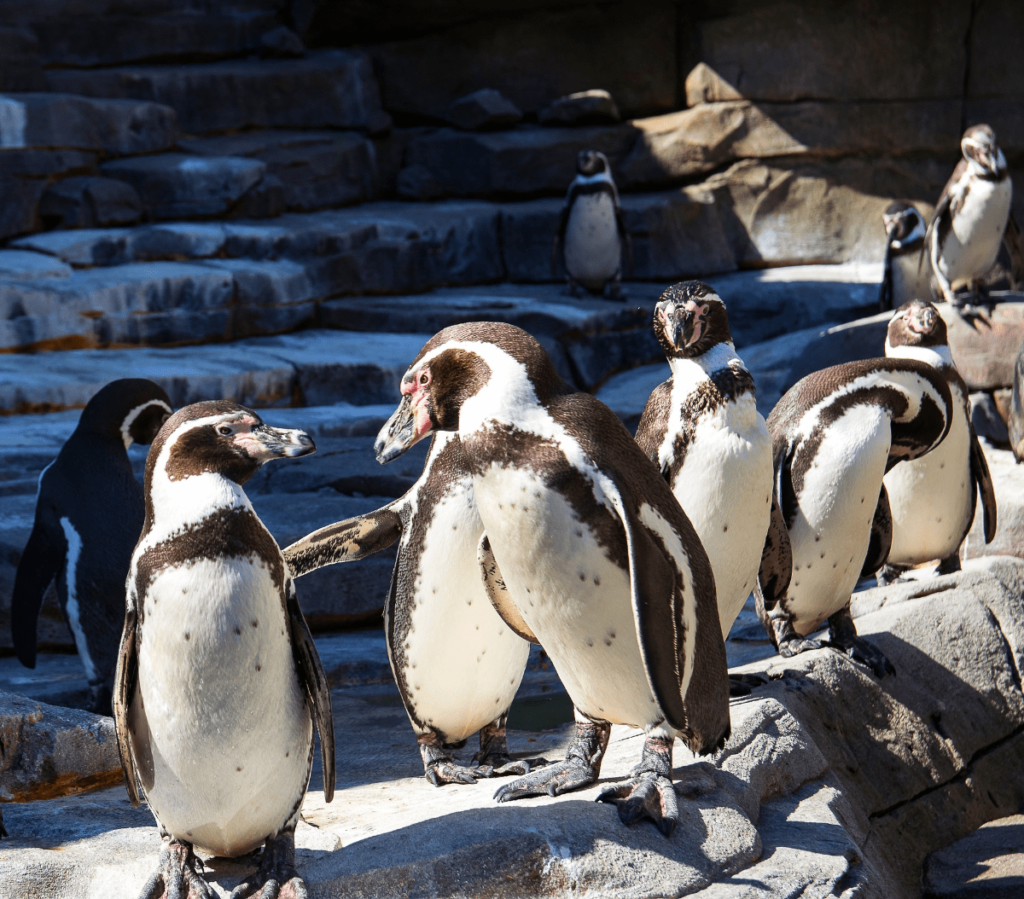
Description: The Galápagos Penguin is one of the few penguin species that live on the equator, characterized by its small size and distinct band across its chest.
Habitat: They are found on the Galápagos Islands and are adapted to the warmer climate of the archipelago.
Key Features: Their smaller size and the band of black feathers across their chest make them distinctive. They are known for their adaptation to a warmer climate compared to other penguins.
Lifespan: Shortest – 10 years, Average – 15 years, Longest – 20 years
14. Magellanic Penguin (Spheniscus magellanicus)
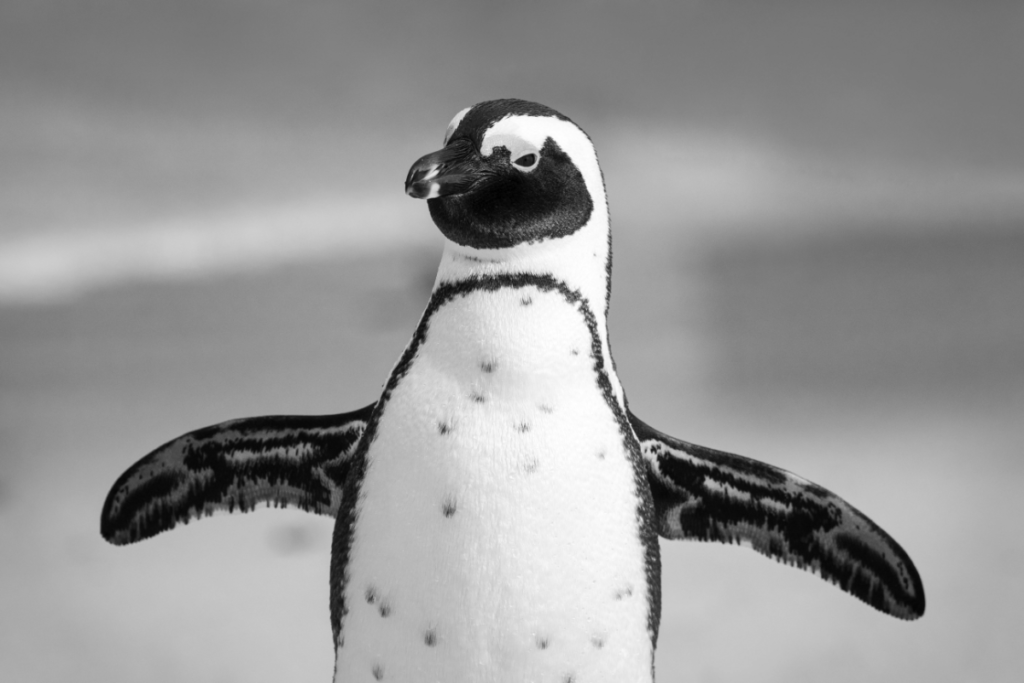
Description: The Magellanic Penguin is a medium-sized penguin known for its distinctive black spots on the chest and a thin white stripe that runs from the eye to the throat.
Habitat: These penguins are native to the coasts of Argentina and Chile, particularly around the Magellan Strait, which is named after them. They also breed on the Falkland Islands and South Georgia.
Key Features: They are characterized by their black and white plumage with a unique pattern of spots. They are known for their noisy, braying calls and are often seen in large, social colonies.
Lifespan: Shortest – 10 years, Average – 15 years, Longest – 20 years.
15. Humboldt Penguin (Spheniscus humboldti)
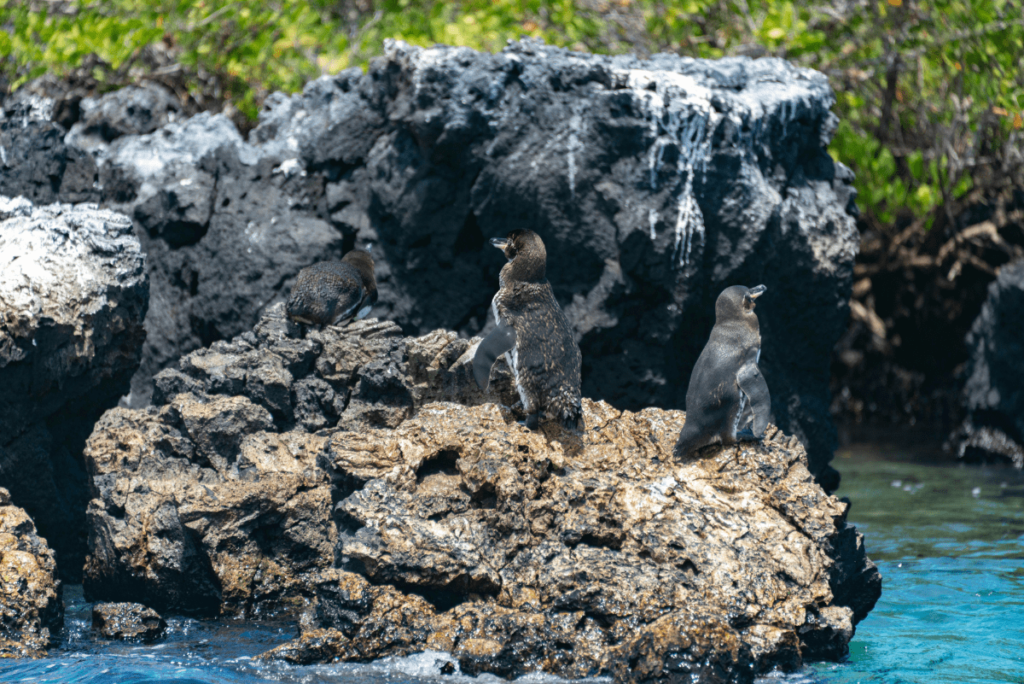
Description: The Humboldt Penguin has a distinctive black band that wraps around the chest and a white ring around the eyes. It is slightly smaller than the Magellanic Penguin and has a more streamlined body.
Habitat: Found along the coasts of Peru and Chile, these penguins are well-adapted to the temperate climate of the Humboldt Current region. They prefer rocky shores and arid environments.
Key Features: The Humboldt Penguin’s black and white plumage is complemented by pink skin around the eyes and beak. They are known for their playful behavior and vocalizations.
Lifespan: Shortest – 10 years, Average – 15 years, Longest – 20 years.
16. African Penguin (Spheniscus demersus)
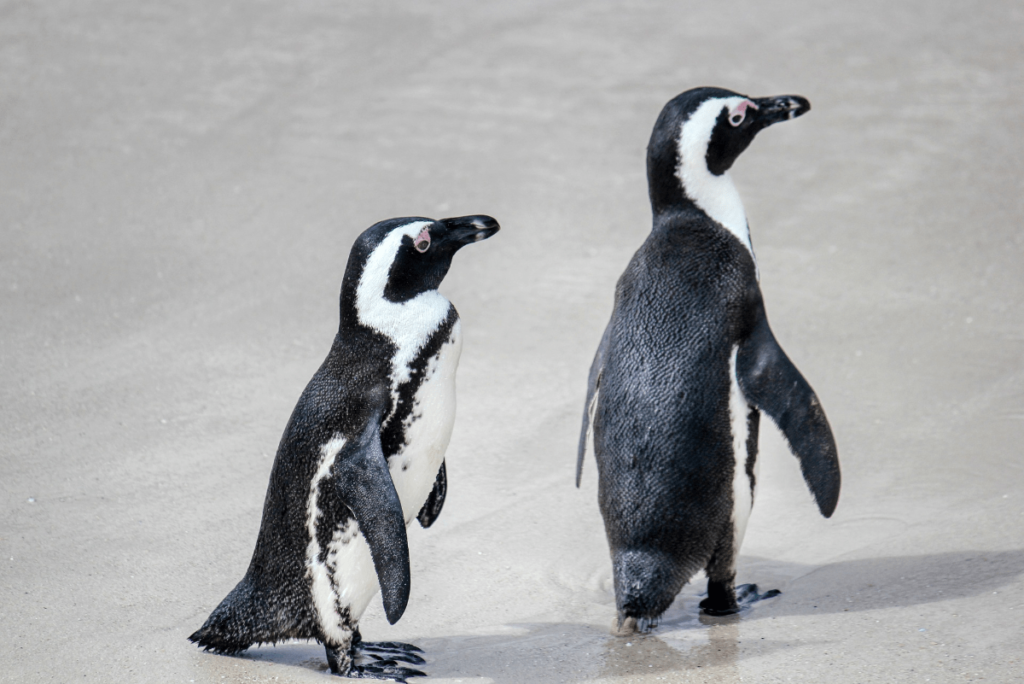
Description: Also known as the Black-footed Penguin, the African Penguin is recognized by its black spots and band around the chest, which is irregular and varies in shape among individuals.
Habitat: Native to the southwestern coast of Africa, from South Africa to Namibia, these penguins are found on rocky shores and small offshore islands.
Key Features: The African Penguin’s distinctive black spots on the white chest and the black band around the neck make it easily recognizable. They are also known for their distinctive, loud braying calls.
Lifespan: Shortest – 10 years, Average – 15 years, Longest – 20 years.
17. Southern Rockhopper Penguin (Eudyptes chrysocome chrysocome)

Description: The Southern Rockhopper Penguin is a subspecies of the Rockhopper Penguin, recognized for its vibrant yellow and black crest feathers. This penguin is smaller compared to its Northern counterpart and is well-adapted to navigating rocky environments.
Habitat: Found on sub-Antarctic islands such as the Falkland Islands, South Georgia, and the South Sandwich Islands. They prefer rugged, rocky coastal areas for breeding, often on steep cliffs.
Key Features: The Southern Rockhopper Penguin is known for its bright yellow crest feathers and its ability to hop across rocky terrain. It has a robust build and is typically found in noisy, dense breeding colonies.
Lifespan: Shortest – 10 years, Average – 15 years, Longest – 20 years
18. Northern Rockhopper Penguin (Eudyptes chrysocome moseleyi)
Description: The Northern Rockhopper Penguin is a subspecies of the Rockhopper Penguin, notable for its bright yellow crest feathers and a slightly larger size compared to the Southern Rockhopper. It is well-adapted to rocky, isolated environments.
Habitat: Inhabits islands in the Indian Ocean, such as Tristan da Cunha and Gough Island. They favor steep, rocky cliffs for breeding and are found in remote, rugged areas.
Key Features: This penguin is distinguished by its bright yellow crest feathers and its adeptness at navigating rocky terrain. It has a robust physique and is often seen in solitary or small, noisy colonies.
Lifespan: Shortest – 10 years, Average – 15 years, Longest – 20 years
19. White-flippered Penguin (Eudyptula minor albosignata)
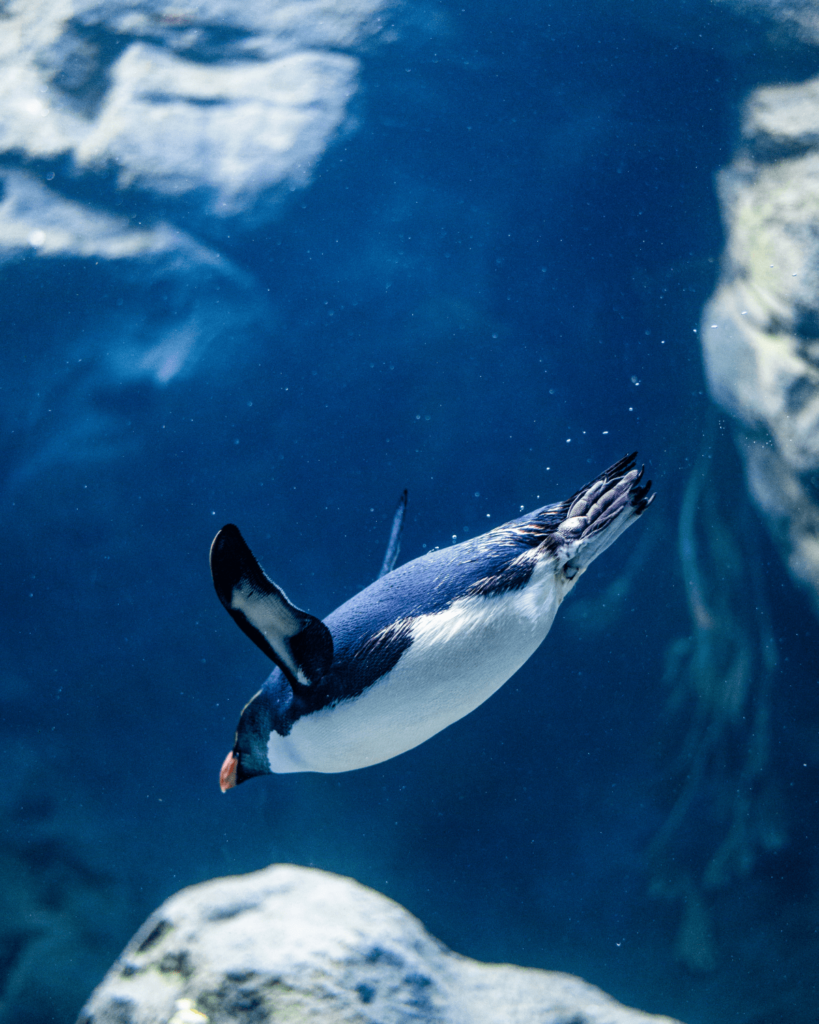
Description: The White-flippered Penguin is a subspecies of the Little Penguin, distinguished by its pale, white flippers. This small penguin is closely related to the Little Penguin but has a unique coloration on its flippers.
Habitat: Native to the Banks Peninsula in New Zealand, the White-flippered Penguin lives in rocky coastal areas with dense vegetation. They prefer to nest in burrows or under cover on steep, rugged terrain.
Key Features: They are characterized by their pale white flippers, which contrast with their blue-gray body. Their small size and nocturnal nature are also notable, as they are often seen in large, social colonies.
Lifespan: Shortest – 6 years, Average – 8 years, Longest – 10 years
All Penguin Species (in Table Form) With Height and Weight:
| Common Name | Scientific Name | Size (ft / m) | Weight (lbs / kg) | Average Lifespan | Habitat |
| Emperor Penguin | Aptenodytes forsteri | 4.0 ft (1.2 m) | 88-99 lbs (40-45 kg) | 15-20 years | Antarctica |
| King Penguin | Aptenodytes patagonicus | 3.0 ft (0.9 m) | 33-39 lbs (15-18 kg) | 15-25 years | Sub-Antarctic islands |
| Adélie Penguin | Pygoscelis adeliae | 2.5 ft (0.76 m) | 8-12 lbs (3.6-5.4 kg) | 10-20 years | Antarctic coast |
| Chinstrap Penguin | Pygoscelis antarcticus | 2.5 ft (0.76 m) | 8-12 lbs (3.6-5.4 kg) | 10-20 years | Antarctic Peninsula & sub-Antarctic islands |
| Gentoo Penguin | Pygoscelis papua | 2.5 ft (0.76 m) | 15-20 lbs (6.8-9.1 kg) | 15-22 years | Sub-Antarctic regions |
| Macaroni Penguin | Eudyptes chrysolophus | 2.4 ft (0.73 m) | 11-15 lbs (5-6.8 kg) | 10-20 years | Sub-Antarctic islands |
| Little Blue Penguin | Eudyptula minor | 1.1 ft (0.33 m) | 2-3 lbs (0.9-1.4 kg) | 6-12 years | Australia & New Zealand coastal regions |
| Royal Penguin | Eudyptes schlegeli | 2.4 ft (0.73 m) | 11-15 lbs (5-6.8 kg) | 10-20 years | Macquarie Island |
| Fiordland Penguin | Eudyptes pachyrhynchus | 2.3 ft (0.7 m) | 8-12 lbs (3.6-5.4 kg) | 10-20 years | Fiordland, New Zealand |
| Snares Penguin | Eudyptes robustus | 2.3 ft (0.7 m) | 8-12 lbs (3.6-5.4 kg) | 10-20 years | Snares Islands |
| Erect-crested Penguin | Eudyptes sclateri | 2.3 ft (0.7 m) | 7-10 lbs (3.2-4.5 kg) | 10-20 years | Bounty & Antipodes Islands |
| Yellow-eyed Penguin | Megadyptes antipodes | 2.8 ft (0.85 m) | 6-9 lbs (2.7-4.1 kg) | 10-30 years | New Zealand coastal regions |
| Galápagos Penguin | Spheniscus mendiculus | 1.8 ft (0.55 m) | 4-6 lbs (1.8-2.7 kg) | 10-20 years | Galápagos Islands |
| Magellanic Penguin | Spheniscus magellanicus | 2.0 ft (0.61 m) | 8-14 lbs (3.6-6.4 kg) | 10-20 years | Argentina & Chile coasts |
| Humboldt Penguin | Spheniscus humboldti | 2.0 ft (0.61 m) | 6-12 lbs (2.7-5.4 kg) | 10-20 years | Peru & Chile coasts |
| African Penguin | Spheniscus demersus | 2.0 ft (0.61 m) | 7-11 lbs (3.2-5 kg) | 10-20 years | Southwestern Africa |
| Southern Rockhopper Penguin | Eudyptes chrysocome chrysocome | 2.3 ft (0.7 m) | 5-9 lbs (2.3-4.1 kg) | 10-20 years | Falkland Islands, South Georgia |
| Northern Rockhopper Penguin | Eudyptes chrysocome moseleyi | 2.4 ft (0.73 m) | 6-10 lbs (2.7-4.5 kg) | 10-20 years | Tristan da Cunha, Gough Island |
| White-flippered Penguin | Eudyptula minor albosignata | 1.1 ft (0.33 m) | 2-3 lbs (0.9-1.4 kg) | 6-10 years | Banks Peninsula, New Zealand |
Penguin Behavior, Adaptations, and Conservation
how many penguin species are there?
There are 18 recognized penguin species, each adapted to various environments from icy Antarctic regions to temperate islands. These species range from the large Emperor Penguin, which endures the harshest climates, to the small Little Blue Penguin, found in warmer coastal regions.
Penguins are spread across diverse habitats, including sub-Antarctic islands, coastal areas of South America and Africa, and the Galápagos Islands near the equator. Each species exhibits unique physical traits and behaviors that enable them to thrive in their specific environments, contributing to the rich diversity within the penguin family.
We have also included the White-flippered Penguin in our list, which is a topic of debate among ornithologists, with some considering it a separate species and others viewing it as a subspecies of the Little Penguin.
Habitat and Distribution
Different types of penguins can be found across the Southern Hemisphere, from Antarctica to the coasts of South America.
- Antarctic Region: This frigid environment is home to Emperor, Adélie, Chinstrap, and Gentoo Penguins. These species have evolved remarkable adaptations to survive in the harsh, icy conditions of Antarctica.
- Sub-Antarctic Islands: King, Macaroni, and Rockhopper Penguins thrive in these milder climates, characterized by rugged, rocky terrain. The conditions here are less extreme compared to the Antarctic but still challenging.
- Temperate Regions: The Little Blue Penguin is native to the warmer coastal areas of Australia and New Zealand. This species has adapted to the milder climates of these temperate regions, contrasting sharply with the cold-adapted Antarctic penguins.
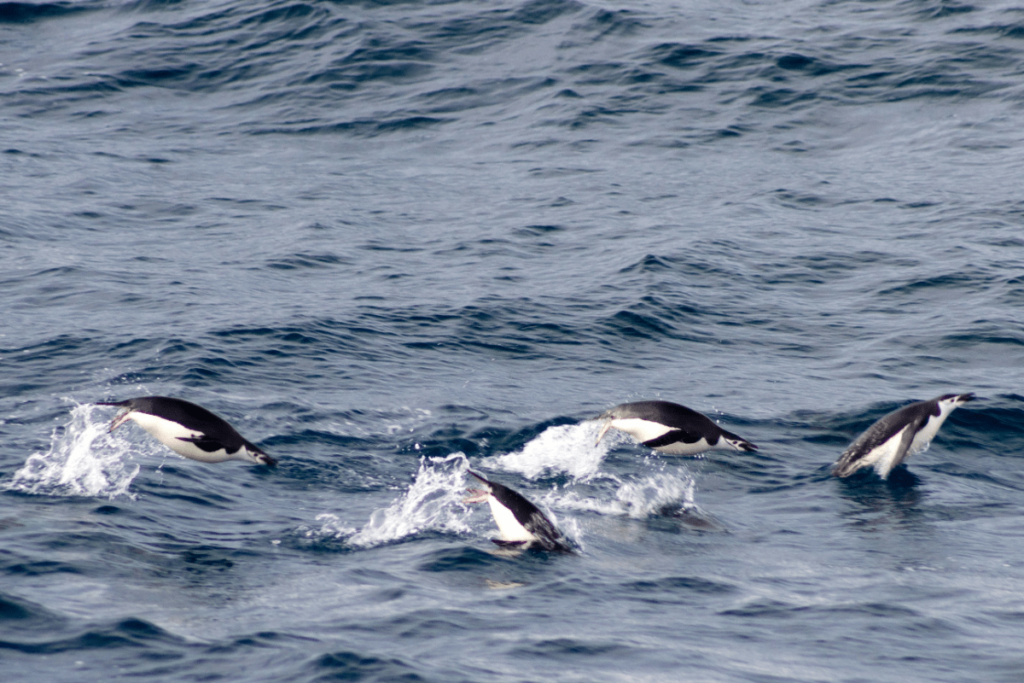
Behavior and Adaptations
- Feeding Habits: Penguins are primarily piscivorous, feeding on fish, krill, and squid. Each species has developed specific hunting techniques and foraging behaviors suited to their environment and prey availability. For instance, Emperor Penguins dive deep to catch fish, while smaller species like the Little Blue Penguin often hunt closer to shore.
- Breeding and Nesting: Penguins exhibit diverse reproductive strategies. Emperor Penguins endure a long incubation period on ice, where males incubate eggs while females forage. In contrast, Rockhopper Penguins nest in rocky crevices, and the Little Blue Penguin prefers burrows or sheltered areas for nesting.
- Social Structure: Penguins display intricate social behaviors. They use vocalizations for communication, engage in elaborate courtship displays, and often practice cooperative breeding. Social interactions are crucial for maintaining colony cohesion and ensuring successful reproduction.
Conservation Status
- Threats: Penguins face numerous threats including climate change, which affects ice habitats; habitat destruction from human activities; overfishing that depletes their food sources; and pollution, which contaminates their environment.
- Conservation Efforts: Conservation efforts are crucial for protecting various types of penguins, many of which are threatened by climate change. Various organizations and research projects focus on protecting penguin habitats, studying their behaviors, and addressing the threats they face. Conservation initiatives aim to mitigate the impacts of climate change, enforce sustainable fishing practices, and reduce pollution.
Fun Facts
- Unique Behaviors: Penguins have unique traits such as their distinctive vocal calls used for mate communication and their characteristic sliding on ice, known as tobogganing, which aids in fast travel across icy surfaces.
- Records and Trivia: Noteworthy records include the Emperor Penguin’s impressive deep dives, which can reach depths of over 500 meters, and the Macaroni Penguin’s large colonies, which can number in the hundreds of thousands.
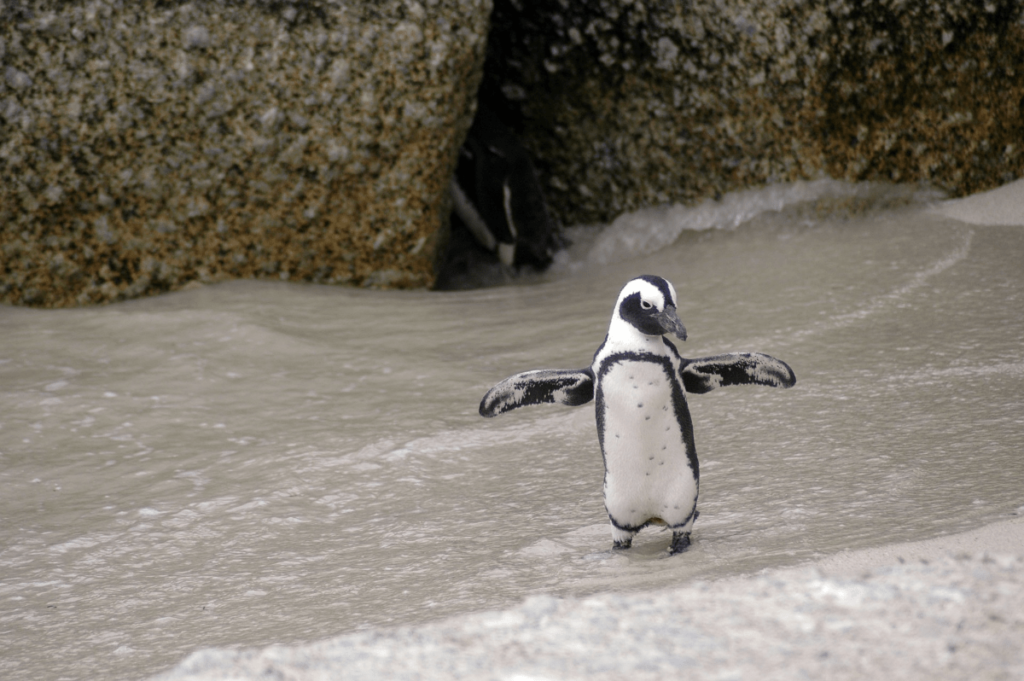
Conclusion
In summary, penguins are a diverse and fascinating group of birds that inhabit various regions across the Southern Hemisphere, from the icy expanses of Antarctica to the temperate coasts of New Zealand and the Galápagos Islands. With 19 distinct species, each adapted uniquely to its environment, penguins showcase an impressive range of physical characteristics and behaviors. From the towering Emperor Penguin to the diminutive Little Blue Penguin, each species contributes to the rich tapestry of life in the avian world.
When learning about types of penguins, it’s essential to recognize how their physical adaptations vary by species. Understanding the differences among these species highlights the incredible adaptability and resilience of penguins. As they face challenges such as climate change and habitat loss, ongoing conservation efforts are crucial to ensuring their survival. By learning more about these remarkable birds, we not only gain insight into their lives but also reinforce our commitment to protecting their natural habitats.
We hope this exploration of penguin species has provided you with a deeper appreciation for these enchanting creatures. Feel free to share your thoughts and any further questions you may have about penguins or other wildlife topics.


